[Library Network] Kyoto University Rare Materials Digital Archive: 792 items of Kyoto-related documents have been newly released
Nakai Collection consists of about 2,500 materials passed down through the Nakai family, the Tokugawa Government's master carpenter family in Kyoto, and 141 items related to the Maps, Work sheds and Social systems are now available on the digital archives.
Some illustrations of Kosatsu-ba are included in the Nakai Collection. The Kosatsu-ba was a place where the public notice written on the wooden plates were posted and located at the west end of the Sanjo Ohashi Bridge in Kyoto during the Edo period.

Above left: a copy of public notice in 1966 (元禄十二卯年三條高札塲江御掛免相成候定書并寸法寫)
Below left: illustration of the Sanjo Ohashi Bridge (橋梁圖11)
Right: illustration of the kosatsu-ba, a public notice board (三條大橋高札塲繪圖)
The Kyoto Machikata Collection, newly released on the digital archive, is a collection of records from Shimomaruya-cho and Hasinishi 2-chome in Kyoto from the 1600s to 1800s, which tells today how the people lived.
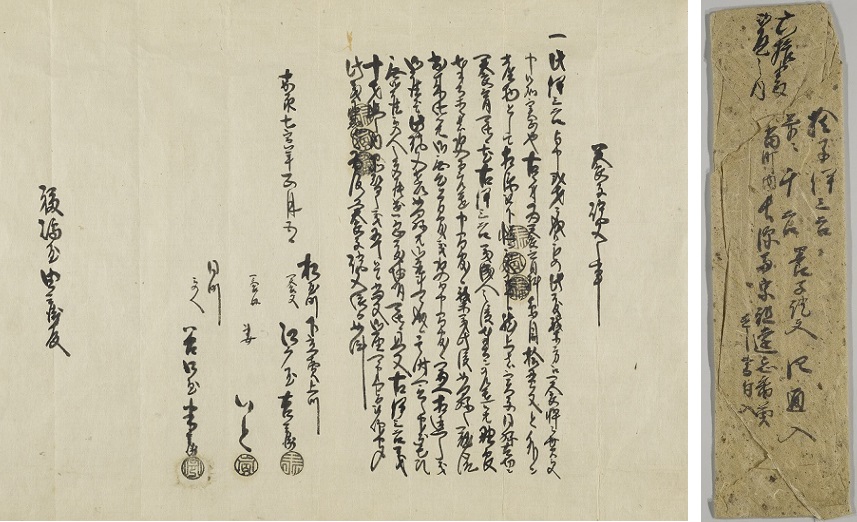
“養子証文之事(伊三吉養子ニ付)” Left: document, Right: cover paper
[Library Network] Kyoto University Rare Materials Digital Archive: 1,707 titles including Tanimura Collection, Nakanoin Collection and Hiramatsu Collection have been released
1,707 titles including Tanimura Collection, Nakanoin Collection and Hiramatsu Collection of in Main Library have been released.
Tsukushi nikki (筑紫日記 上下) is the diary of Imagawa Ryoshun (今川了俊, 1326-1420), a military commander and poet of Nanboku-cho (Northern and Southern Courts) period, transcribed by Matsuoka Gentatsu (松岡玄達, 1668-1746), a herbalist in Edo period. Matsuoka also left lot of annotations and ownership stamps in the diary.
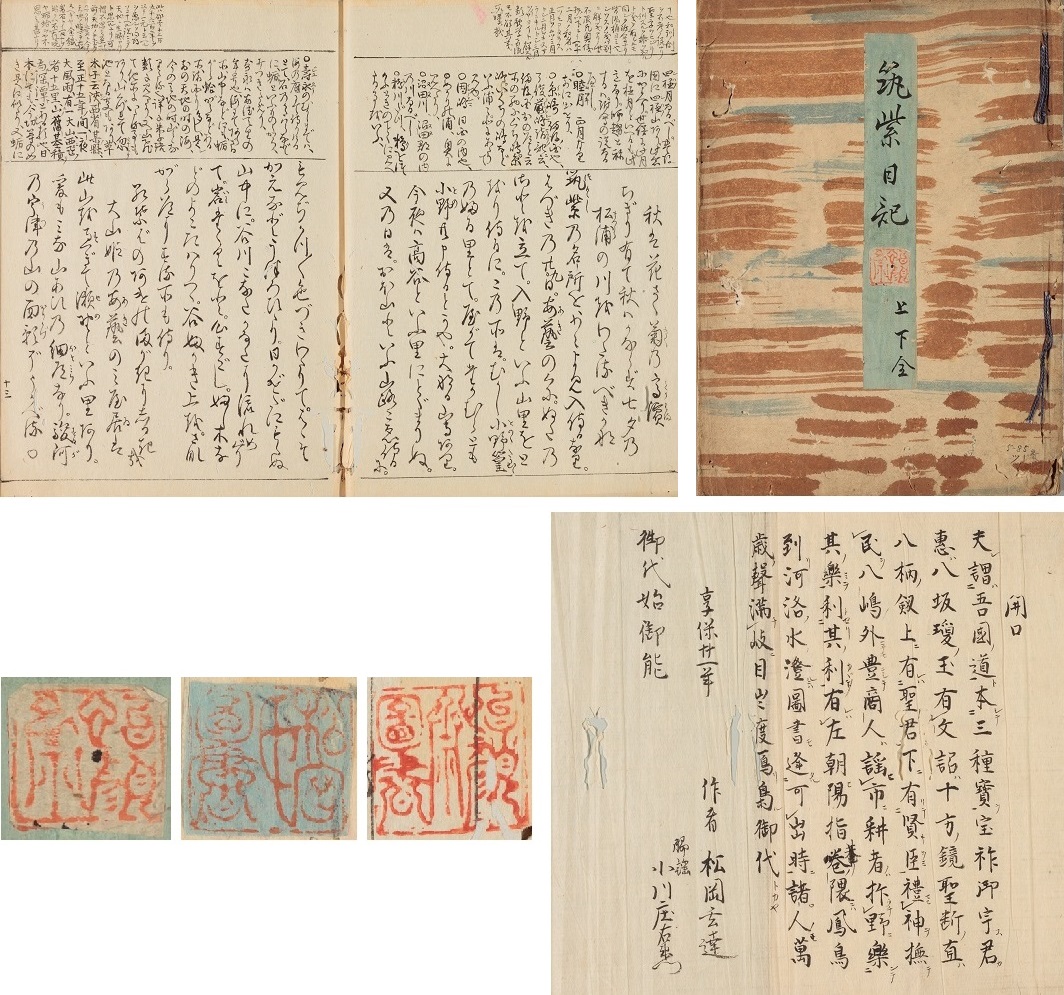
“筑紫日記 上下” Above left: texts and annotations, Above right: cover, Below left: ownership stamps, Below right: 開口文(texts for a part of Noh chants)
Nakanoin Michimura nikki (中院通村日記) is the autograph diary of Nakanoin Michimura (中院通村, 1588-1653) for October, 1626.
Nakanoin Collection was formerly held by Michinori Nakanoin (1856-1925). The family's contribution to research in Japanese literature is acknowledged.
In particular, Michikatsu (1558-1610) and Michimura are renowned for their deep knowledge of Japanese literature, especially waka (31-syllable Japanese poetry).
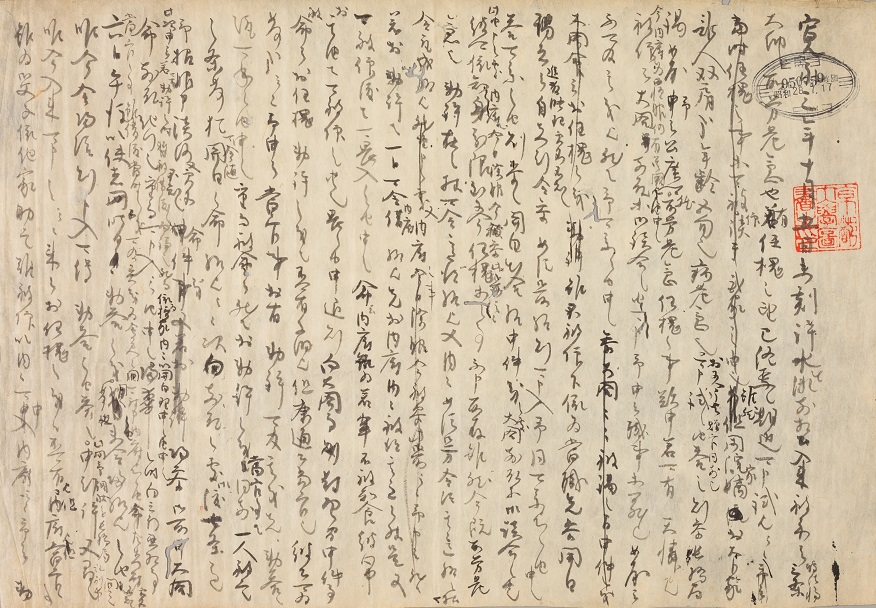
“中院通村日記”
1,689 of 1,707 items released this time were digitized under the “Project to Build an International Collaborative Research Network for Pre-modern Japanese Texts” by the National Institute of Japanese Literature in which Kyoto University Library participates.
[Library Network] Kyoto University Rare Materials Digital Archive: Sanskrit manuscripts and Ezo-related archives have been newly released
118 titles of Sanskrit manuscripts and Ezo-related archives Ezochi ikken (蝦夷地一件) and Ezo byōgi (蝦夷廟議) held by the Graduate School of Letters have been newly released.
The Sanskrit manuscripts were collected in Nepal and brought back to Japan by Professor Ryozaburo SAKAKI (榊亮三郎, 1872-1946), the initiator of Sanskrit studies in Kyoto Imperial University.
The collection became relegated to the official possession of the Faculty of Letters in 1977, and then, on the occasion of the opening of the manuscripts to the public, A succinct catalogue of the Sanskrit manuscripts in the possession of the Faculty of Letters, Kyoto University compiled by Kiyotaka Goshima and Keiya Noguchi. Society for Indic and Buddhistic Studies, Kyoto University, 1983 was compiled. The descriptions of the catalogue have been cited in the “Note” section of metadata.
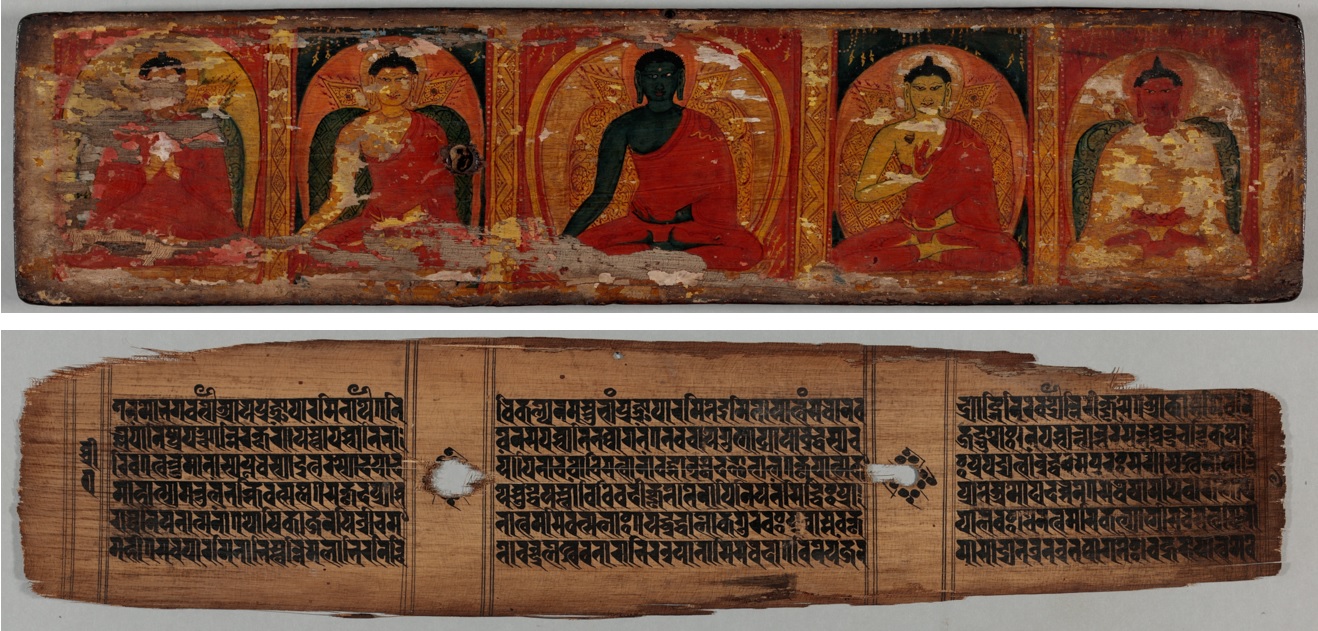
Ezochi ikken (蝦夷地一件) was a collection of official documents from 1784 to 1790 concerning the Ezo issue in the Edo shogunate.
Of the seven original volumes, the Graduate School of Letters holds Vol.1-5 including the Vol.1 and Vol.4, which have been missing for a long time. (ref. 岩﨑奈緒子著『近世後期の世界認識と鎖国』)

“蝦夷地一件” Left: Russian merchant and translator of Ezo man, Right: Katana sword
Ezo byōgi (蝦夷廟議) is a collection of official documents from the visit of Laxman, the first Russian envoy to Japan, in 1792.
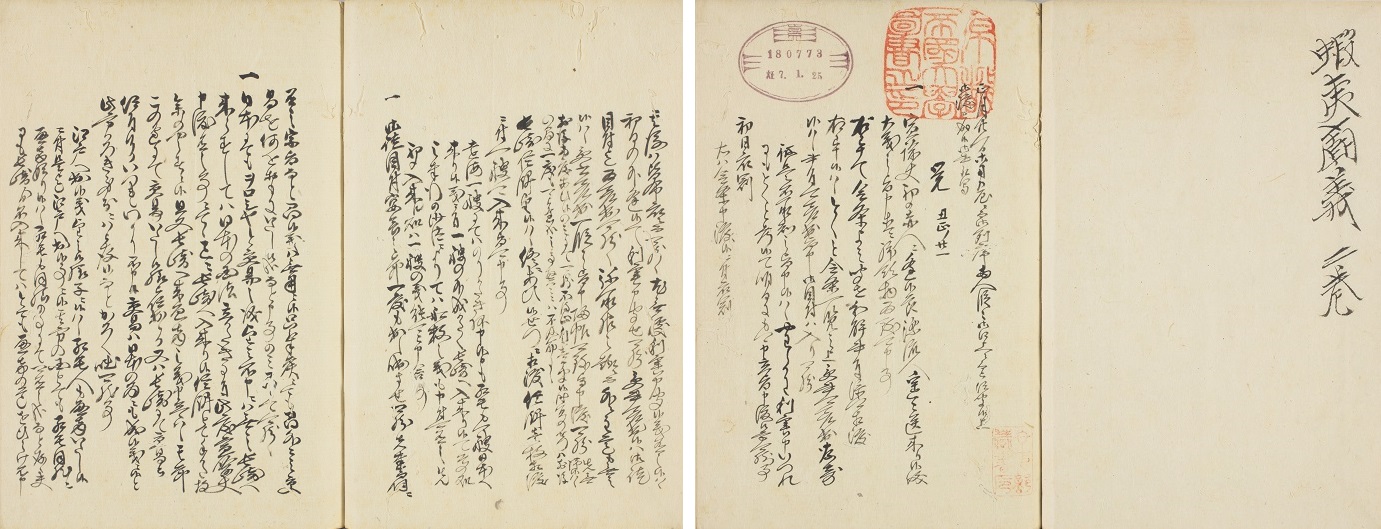
“蝦夷廟議”
[Maintenance] Library Network Service temporarily stop on March 30
Due to the maintenance, Library Network Service will temporarily stop on March 30, 2022
■ Closed Date : March 30 2022, p.m. 8:30 - p.m. 9:00
■ Services not available : KULINE, MyKULINE
※Upon completion of the maintenance, services will restart.
※E-journals, Databases, Kyoto University Research Information Repository (KURENAI), Kyoto University Rare Materials Digital Archive and Library websites will not be affected.
Solved:[Library Network] Access to Elsevier ScienceDirect is rejected
Solved! (2022.3.30)
Because of excessive download of E-Jounral articles, access to Elsevier ScienceDirect is rejected.
For more information:
[Library Network] Conditions of Use and Licensing Restrictions for E-Resources